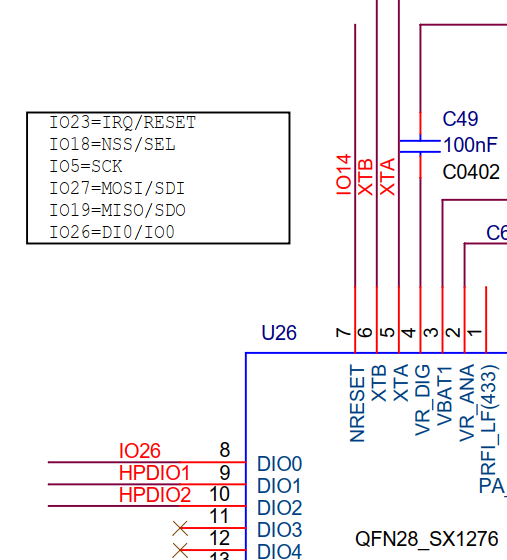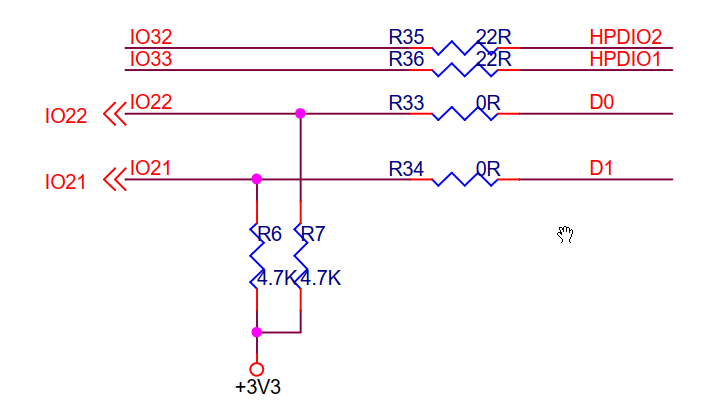<rant-mode>
Some examples of inconsistencies in LilyGO/TTGO documentation.
In this case for TTGO LoRa32 V1.3 (aka LoRa V1.3, aka T3 V1.3).
Part of the circuit diagram:
Notice that the LoRa32 V1.3 circuit diagram is actually placed in the T-Beam repository which is a totally different product. The information is not where one expects and will try to look for it.
LilyGo also have a website which unfortunately hardly provides (better detailed) information about their (LoRa) products and is again made difficult to find.

What the above says:
SX1276 Reset is connected to ESP32 GPIO14 (diagram)
SX1276 Reset is connected to ESP32 GPIO23 (textbox)
Only one of these is correct. Now you figure out which one…
The information in the textbox shows “IO23 = IRQ/RESET” but IRQ and Reset are not the same and do not use the same pin!
What is often incorrectly called IRQ on these boards is actually the DIO0 pin from the LoRa chip which on TTGO LoRaWAN boards is connected to the ESP32’s GPIO26 pin and not GPIO23.

According to the circuit diagram:
Display D1 is I2C SDA = ESP32 GPIO21
Display D0 is I2C SCL = ESP32 GPIO22
However, in practice this appears not to be true,and instead:
SDA = GPIO4
SCL = GPIO15
The same repository contains a product link for the TTGO LoRa32 V1.3 that points to the LilyGo shop on AliExpress (in Portugese!).
The page contains a pinout diagram for the TTGO LoRa32 V1.3 (aka T3) that contains the same incorrect?? I2C pins information:

A month ago I copied the same pinout diagram and then it showed:

As said before, in posts from others SDA in pratice appears to be GPIO4 and SCL appears to be GPIO15. Which is as shown on the pinout diagram from a month ago, while the pinout currently shown on their shop’s product page shows SDA = GPIO21 and SCL = GPIO22.
I don’t have the board so I am unable to verify it.
The different pinout diagrams do not show a document version or document date.
What to believe here? Who / what is correct and when?
Without actually having the boards to verify it is impossible to know which information is correct.
Will we soon see a batch of new boards with same version number where the IC2 pins have suddenly changed?
Deficient documentation and contradicting information like above make it hard to keep information in this topic up to date and reliable (and this hasn’t improved much over time).
It also does not give much confidence in these products. If essential information and documentation keep having/getting errors and inconsistencies then why would one expect the products themselves and their design to be any better?
</rant-mode>